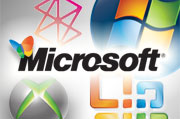Microsoft will finally uncover all the details of its Windows Phone 7 OS next week at the Web developer community’s MIX conference. This is coming amid reports that Windows OS is losing the smartphone user market. Of the 42.7 million U.S. smartphone users, the percentage using Windows Mobile devices dropped 4 points, from 19.7% in October 2009 to 15.7% in January 2010.
PC World discusses the priorities and challenges facing Microsoft in the coming months:
1. The Windows Phone 7 platform
At least four sessions are devoted to unpacking the technical details of Windows Phone 7, which is actually the user interface layer atop the underlying Windows Embedded CE 6.0 R3 kernel, released to manufacturing in September
Despite the radical new phone UI, software developers will rely on familiar Microsoft tools and technologies for writing the applications that exploit it, including .NET, Silverlight (see below) and Microsoft Expression Blend 3, and the gaming development environment XNA Game Studio. Windows Phone 7 incorporates a new application model, new input models (including multi-touch), APIs to access phone features and applications, and new Web services.
Microsoft recently announced the renaming of “Windows Mobile” to “Windows Phone Classic” and has confirmed that existing mobile applications can’t be ported to Windows Phone 7. For some developers, that’s bad news. “By dropping backward compatibility you have basically just killed Windows Mobile, and since your new platform will be very unfriendly to enterprise and is years behind developer and consumer adoption, you have basically killed Microsoft’s mobility ambitions,” one developer, surur, commented on a Microsoft blog post.
But others are ready to embrace that radical break with Windows Mobile. “If you honestly won’t look into a new technology because it might not support something you wrote seven years ago, you’re in the wrong field,” commented Ian Muir, in the same thread.
Given the emphasis on Microsoft tools and technologies, one other issue is to what degree the Windows Phone 7 platform will be open to outside tools and technologies.
2. Silverlight lights the way
Silverlight refers to Microsoft’s technology and tools for building high performance, rich, interactive applications for the Web. It’s intended as a main development environment for Windows Phone, and at least six MIX sessions are devoted to this (other MIX sessions cover Silverlight 4, unveiled in November and due to ship by June 2010. Mobile developers will learn about the new input models, including multi-touch and soft keyboard, and the APIs to make use of applications such as the phone dialer and email. Also on tap: video-based Silverlight application requirements, including support for large-scale media delivery,
Microsoft will be disclosing the new Windows Phone application model and new Windows Phone Web services, all part of enabling Silverlight for mobile applications. At the least, developers can expect to see a higher level of integration and interoperability with Silverlight content on Windows PCs and via emerging Web services from Microsoft and its partners.
3. Mobile games, and their implications for the enterprise
As with the new Windows Phone UI, the Windows Phone gaming framework is part of Microsoft’s “consumer-ization” of its mobile OS. That means: making it possible to create flexible, user-focused mobile experience that supports a range of user interests, passions and requirements. There are several sessions and extended workshops that deal with using Microsoft’s just-unveiled XNA Game Studio 4 to create games for Windows Phone 7, and integrating with Xbox Live, the online Microsoft gaming environment.
Among other changes, XNA is now what Microsoft calls a “managed code” platform, referring to code that executes under a Common Language Runtime virtual machine. According to Microsoft, managed code lets developers create applications faster, be more productive, and focus on higher-level design issues.
Existing games won’t have to be entirely re-coded to run on Windows Phone 7, according to Microsoft. Likewise, a game built initially for the phone can be partially reused to adapt the game for the Xbox 360 game console.
It’s possible these two capabilities debuting in the gaming platform — managed code and adapting existing applications — may be part of the overall Windows Phone application approach. Enterprises won’t be deploying mobile games as enterprise applications. But the hardware and software requirements to support both native and networked applications (games) that are highly interactive, compute-intensive, high definition and media-rich applications will serve to demonstrate the capabilities of smartphones running the redesigned OS.
4. An application marketplace “revolution?”
Beyond the nuts and bolts of building an application, Microsoft will also unfold a retooled online Windows Phone catalog. The company says its new approach, in the “Windows Phone Marketplace,” will “revolutionize” the way Windows Phone 7 applications, including games, are distributed and “monetized.”
The Windows Marketplace for Mobile went live just in the fall, and Microsoft has been updating and improving it ever since. Phone users can directly access the Web site and buy and download phone applications. Some of the changes focus on improving the user’s navigation and discovery of phone applications and the ability to download big applications to a phone’s storage card; others on streamlining and rationalizing the developer submission process, and cutting some developer costs.
So far, Microsoft has released few hints of how it will revolutionize something that’s barely six months old.





All Keygen Product Key Office windows 7 CS5 NOD32 KASPERKSY etc etc…
http://officekey.blogspot.com/